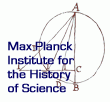"A portrait of Don Giovanni de' Medici"
Don Giovanni de' Medici (1567-1621), the natural son of Cosimo I, was renowned for his versatility in various sciences and arts. Known, most of all, as soldier, diplomat, architect, and military engineer, he also pursued interests in astrology, alchemy, and medicine as well as collected books and all kinds of luxury objects, especially textiles. During his extended stays in the Netherlands from 1587 to 1589 and from 1602 to 1606 in support of the military campaigns of the Habsburgs, he also served as an efficient communicator of military news to his half-brother Ferdinando, Grand Duke of Tuscany. A 'newsletter' (avviso) from Antwerp dated August 2, 1602 reports that he lodged in a "very well furnished house" in Antwerp that was "appropriate for a cavaliere of his status." The same month Giovanni informed Ferdinando that Lord Emmanuel Ximenez had provided him a "very exquisite horse." Later in 1602 Ferdinando requested that Giovanni commission "some good painter" to make "the siege of Ostend and that of Grave with four or six other paintings of landscapes" to be placed in the Villa Ferdinanda near Artiminio in the Tuscan hills. The Ximenez family would pay all costs. The paintings (totaling seventeen at the end) were shipped to Livorno from Amsterdam in April 1604. Don Giovanni de' Medici and Emmanuel Ximenez shared a number of interests including Paracelsian alchemy, astrology, architecture, and fortification. They certainly also exchanged news and information – readily available in the port city of Antwerp – about ongoing sieges and other issues. Both Emmanuel and Don Giovanni reported extensively about Pompeo Targoni's military devices and accompanied their letters with sketches and models of the siege of Ostend. The portrait of Giovanni de' Medici, hung in the upstairs room facing the street, might have been presented to Emmanuel Ximenez as a gift for his services on behalf of the Medici prince.
Literature
Landolfi, Domenica. "Don Giovanni de' Medici, principe intendente in vari scienze." Studi seicenteschi 29 (1988): 125-162.
Dooley, Brendan. "Art and Information Brokerage in the Career of Don Giovanni de' Medici." Your Humble Servant. Agents in Early Modern Europe. Eds. Hans Cools, Marika Keblusek, and Badeloch Noldus. Hilversum: Uitgeverij Verloren, 2006. 81-95.
Dooley, Brendan. "Making It Present." The Dissemination of News and the Emergence of Contemporaneity in Early Modern Europe. Ed. Brendan Dooley. Farnham: Ashgate, 2010. 95-114.


